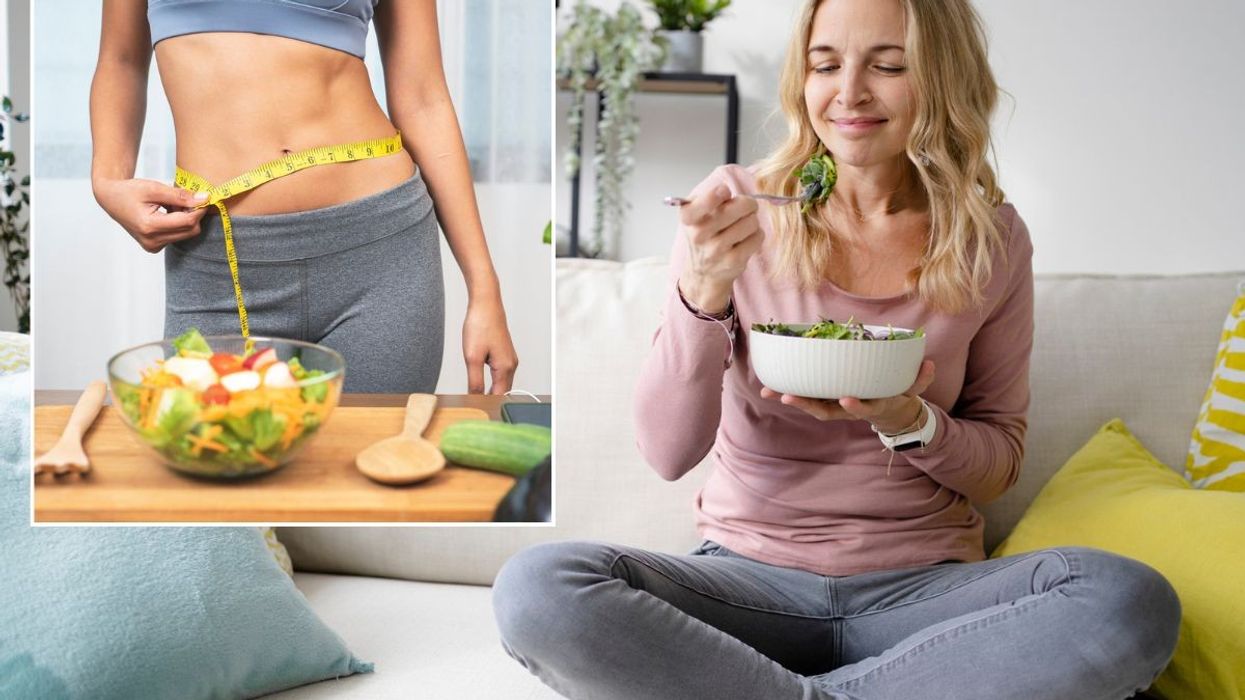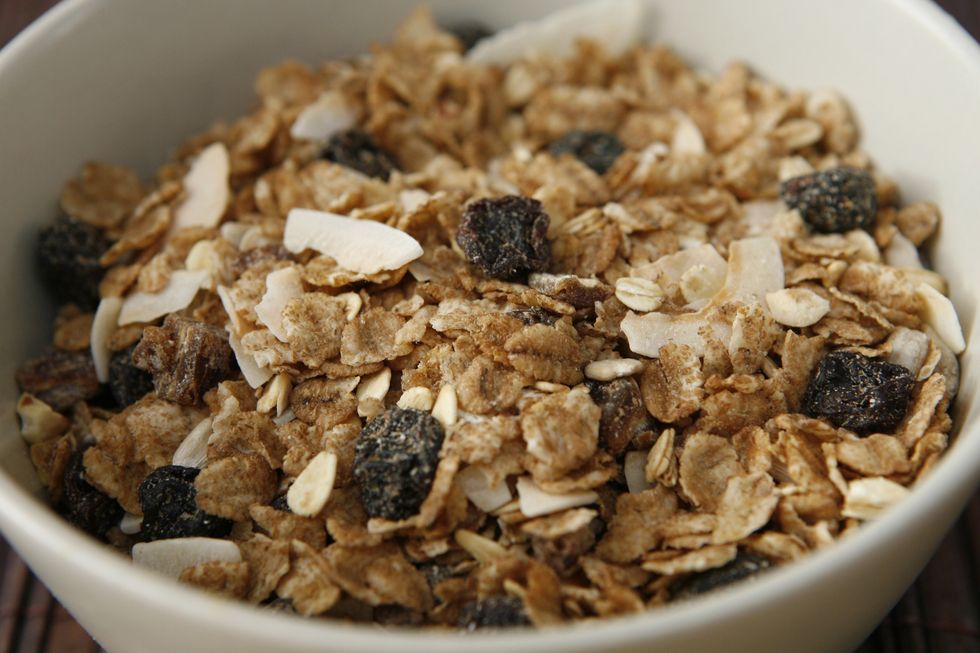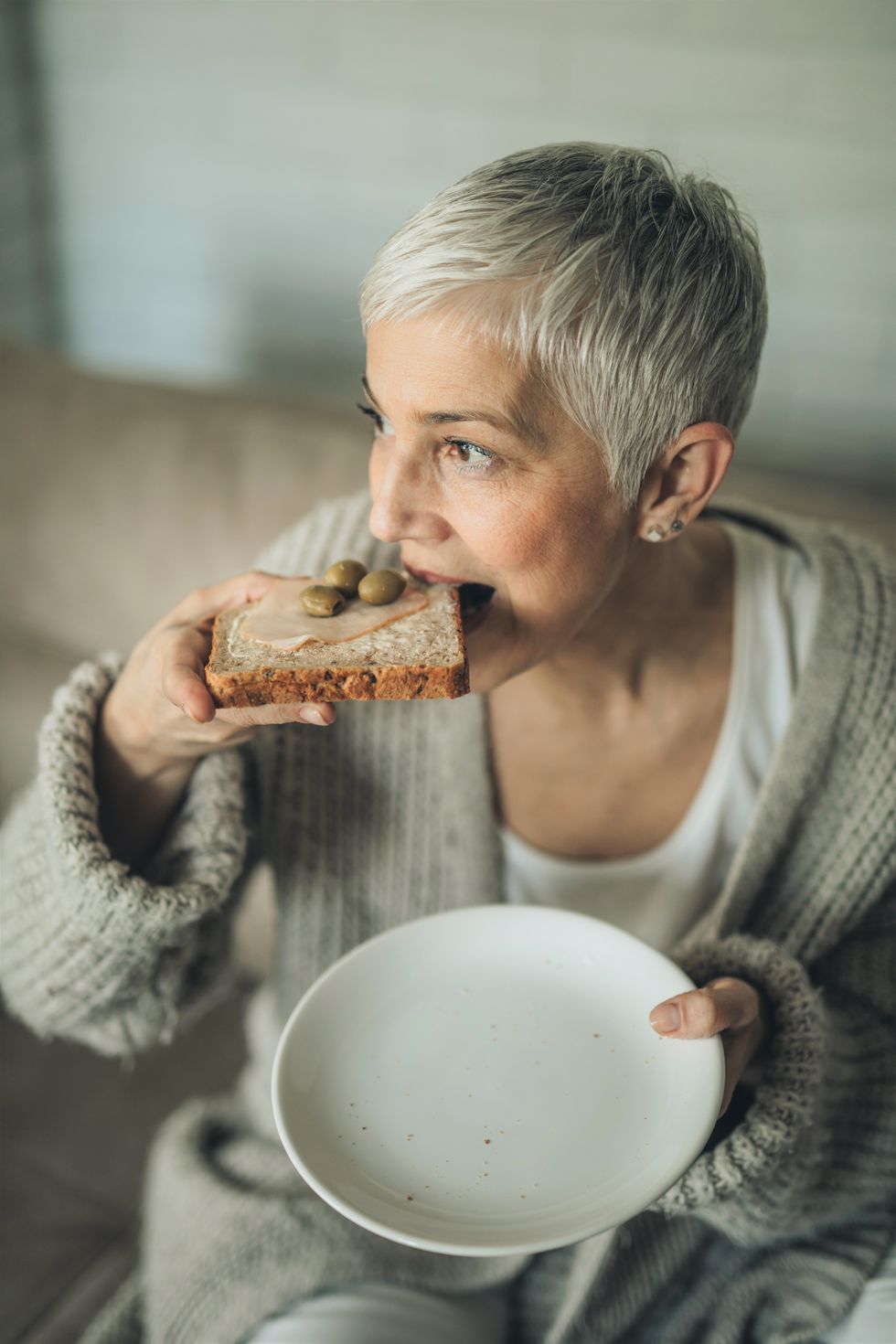One food group can 'significantly' shrink your waistline and promote weight loss - seven ways to add more to your diet

Eating foods high in fibre like fruits and vegetables can slim the waistline
|GETTY

Eating enough fibre can help with weight loss and it can slim the waistline
Don't Miss
Most Read
Food is one of the most important factors when trying to burn fat and manage your weight.
It can be found naturally in foods such as fruits, vegetables, grains and seeds.
While tracking calories and creating a deficit is a fail-proof way to lose weight, what you eat while doing this can speed up the results, dietitian Dr Carrie Ruxton explained.
She said: "Obesity is often put down to too many calories in versus too few calories out but the picture is more complex than that, incorporating factors such as environment, lifestyle, genetics, and underlying state of health.
 Foods high in fibre can suppress the appetite | PA
Foods high in fibre can suppress the appetite | PA"It’s also worth noting that a feeling of heaviness could also be related to a lack of digestive health, with over six in 10 (62 per cent) in the survey saying they often or sometimes felt bloated.”
This is from research conducted on behalf of General Mills, maker of brands like Fibre One and based on UK dietary intake data. It found around 30 per cent of Britons are missing out on a third of the dietary fibre they should be consuming if they want to live long and healthy lives.
This can also correlate to weight and how slim the waist is. A collection of studies from the journal Nutrients found overweight people lost significantly more weight when eating more fibre. Research showed they also had a significant reduction in waist circumference.
Eating around 30 grams of fibre a day can be a good start and the doctors shared seven ways you can add more fibre into your diet.
Load your sides
“Plan to add a side of veg or salad to every main meal. This is a great way to get more fibre as well as other essential vitamins and minerals without having to think too hard about it. In no time, you could be upping your daily veg portions by three a day," Dr Kalaria said.
Have a varied diet
“Don’t bore your tastebuds with the same breakfast every day. Look forward to higher fibre options by changing up the type of loaf you buy each week and the type of high-fibre cereal you stock up on. And why not add a serving of fresh or frozen fruit too?” Dr Ruxton added.
Make small changes
“If you’re used to white bread, pasta and rice, ease yourself in gently. Start by swapping white bread for half and half, and gradually move to whole grain varieties. Where pasta is concerned, besides regular wholegrain, there’s a huge variety of different types to try, from chickpea, to lentil, to buckwheat,” says Dr Kalaria.
Add more to your meals
“There are several simple ways to enhance mealtimes with high-fibre add-ons. For instance, you could top porridge with chopped nuts and dried fruits or dress up a salad with colourful roasted veg and crunchy toasted seeds,” Dr Ruxton advised.
LATEST DEVELOPMENTS

Aim for 30 grams of fibre a day
| GETTYChoose beans
“Protein is another important nutritional constituent of mealtimes. Beans are not only a good source of protein, they are also rich in fibre. So, why not swap out some of the meat in your next batch-cooked stew, casserole, curry, or chilli with a tin of beans? Besides being beneficial to your health, it’s likely to save you money,” Dr Kalaria explained.
Make snacks count
“Instead of reaching for the crisps and chocolate for a between meals pick-me-up, have a range of different vegetable sticks on hand. This could include carrots, peppers, cucumbers, celery, baby corn and anything else you fancy. For a real fibre boost, try dipping them in hummus or a bean-based dip. Oatcakes and nut butter of your choice is another fibre-filled and delicious way to curb hunger pangs,” says Dr Ruxton.
Drink up
“This last tip is especially important for supporting healthy fibre intake. Don't forget that higher-fibre diets require us to drink plenty of fluids to keep things moving smoothly through the digestive system. Tap water is always the best option," the doctor added.










